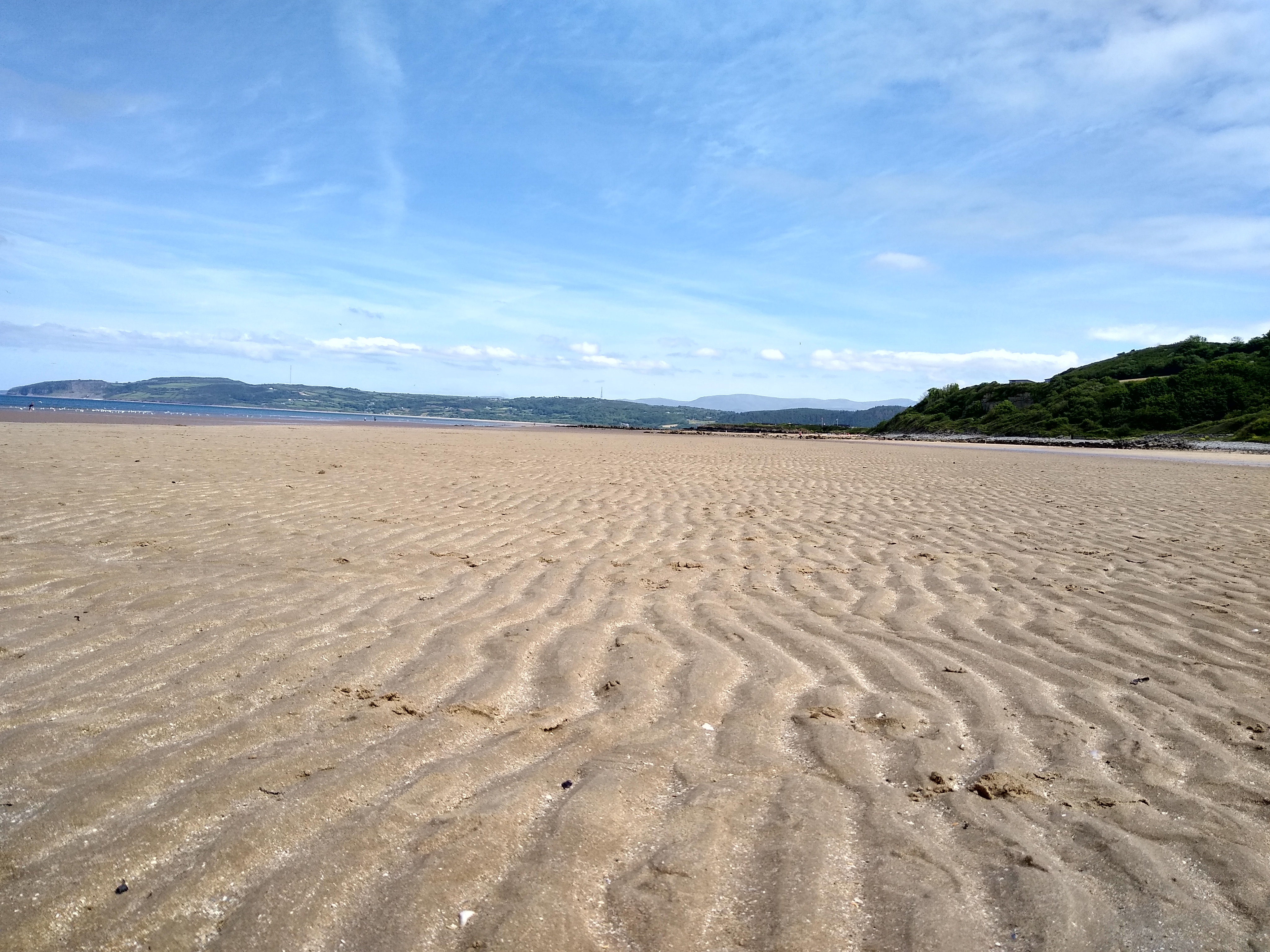|
Traeth Bychan
Traeth Bychan (''Traeth'' = 'beach', ''Bychan'' = 'small') is a beach on the isle of Anglesey, Wales. The beach is between the villages of Benllech and Moelfre. It faces eastwards and so offers shelter from the prevailing southwesterly winds. It is popular with walkers on the Anglesey Coastal Path and is used by members of the Red Wharf Bay Sailing and Watersports Club. This quiet beach is famous as the spot where the submarine HMS Thetis was beached after a tragic accident which occurred off the coast, when the vessel was carrying out trials in 1939. There is a cafe and public toilets within the pay & display car park. Nearby, is the small town of Benllech and the village of Marian-Glas Marian-glas or Marianglas () is a small village and post town in Anglesey, north-west Wales. It lies between the larger villages of Moelfre and Benllech and just off the A5025. There is a large caravan park on the edge of the village and severa .... References External links * {{cit ... [...More Info...] [...Related Items...] OR: [Wikipedia] [Google] [Baidu] |
Anglesey
Anglesey (; cy, (Ynys) Môn ) is an island off the north-west coast of Wales. It forms a principal area known as the Isle of Anglesey, that includes Holy Island across the narrow Cymyran Strait and some islets and skerries. Anglesey island, at , is the largest in Wales, the seventh largest in Britain, largest in the Irish Sea and second most populous there after the Isle of Man. Isle of Anglesey County Council administers , with a 2011 census population of 69,751, including 13,659 on Holy Island. The Menai Strait to the mainland is spanned by the Menai Suspension Bridge, designed by Thomas Telford in 1826, and the Britannia Bridge, built in 1850 and replaced in 1980. The largest town is Holyhead on Holy Island, whose ferry service with Ireland handles over two million passengers a year. The next largest is Llangefni, the county council seat. From 1974 to 1996 Anglesey was part of Gwynedd. Most full-time residents are habitual Welsh speakers. The Welsh name Ynys M ... [...More Info...] [...Related Items...] OR: [Wikipedia] [Google] [Baidu] |
Benllech
Benllech (; ) is a large village on the Isle of Anglesey in Wales. It is in the community (Wales), community of Llanfair-Mathafarn-Eithaf, which has a population of 3,382, making it the fourth largest settlement on the island of Anglesey. The name of Benllech village had been removed by the time of the 2011 census with the community being listed under Llanfair-Mathafarn-Eithaf with the Wards and electoral divisions of the United Kingdom, electoral ward being listed under Llanddyfnan. The built-up area has a population of 2,236. Description The Welsh placenames, name Benllech is perhaps a mutated form of ''penllech'', literally "head slab" or "head rock", i.e. "capstone" or "head of the rock", or possibly meaning 'on slate', shortened from the Welsh term 'ar ben llech'. Benllech is a well established seaside resort and popular beach holiday destination. Winner of the European Blue Flag award since 2004, the beach shelves an abundance of clean yellow sand and looks out toward t ... [...More Info...] [...Related Items...] OR: [Wikipedia] [Google] [Baidu] |
Moelfre, Anglesey
Moelfre () is a village, a community and, until 2012, an electoral ward on the north-east coast of the Isle of Anglesey in Wales. The community area covers the village and harbour, and several smaller, dispersed settlements. It includes six scheduled Iron Age hut groups and many other sites of archaeological interest. The harbour was formerly a local fishing port; a lifeboat station has been based here since 1854. Among many shipwrecks off the coast was that of the Royal Charter in 1859. Near the modernised lifeboat station is the RNLI Seawatch Centre. The coastline includes a rocky headland north of the village and a large sandy beach at Lligwy Bay, both traversed by the Anglesey Coastal Path. The 2011 census measured the village population as 710. It was estimated at 614 in 2019. Location The village of Moelfre wraps around a small harbour sheltered from the north by a substantial headland and the rocky island of Ynys Moelfre. Also within Moelfre Community are the more dispers ... [...More Info...] [...Related Items...] OR: [Wikipedia] [Google] [Baidu] |
Anglesey Coastal Path
The Anglesey Coastal Path (formally the Isle of Anglesey Coastal Path) is a long-distance footpath around the island of Anglesey (Ynys Môn) in North Wales. The route is part of the Wales Coast Path. Description The path mainly follows the coast. Exceptions are where the path comes inland from Moel y Don by Plas Newydd estate, and the Bodorgan Estate on the west of the island between Aberffraw and Malltraeth, where the Prince and Princess of Wales used to live. The loop officially begins and ends at Holyhead, and is described in the official guidebook in an anti-clockwise direction. It cost £1.4 million and runs virtually within the length of the entire Area of Outstanding Natural Beauty, using the existing network of public rights of way and some designated permissive paths. For example, the coastal path at Mynachdy is closed between mid-September and mid-February. There are alternatives to these permissive paths. The path is well signposted throughout. It has been walk ... [...More Info...] [...Related Items...] OR: [Wikipedia] [Google] [Baidu] |
HMS Thetis (N25)
HMS ''Thetis'' (N25) was a Group 1 T-class submarine of the Royal Navy which sank during sea trials in Liverpool Bay, England on 1 June 1939. After being salvaged and repaired, the boat was recommissioned as HMS ''Thunderbolt'' in 1940. It served during the Second World War until being lost with all hands in the Mediterranean on 14 March 1943. The ''Thetis'' accident happened after the inner hatch on a torpedo tube was opened while the outer hatch to the sea was also open. Four men successfully used the sub's one-man escape chamber before a fifth panicked and jammed it. A total of 99 men died as a result. The sinking led to the redesign of all torpedo tubes on British and Australian submarines. A latch, known as the "''Thetis'' clip", was added to the inner torpedo tube door so it could be fractionally opened to check the tube was not open to the sea before being fully opened. As HMS ''Thetis'' ''Thetis'' was built by Cammell Laird in Birkenhead, England and launched on 29 ... [...More Info...] [...Related Items...] OR: [Wikipedia] [Google] [Baidu] |
Marian-Glas
Marian-glas or Marianglas () is a small village and post town in Anglesey, north-west Wales. It lies between the larger villages of Moelfre and Benllech and just off the A5025. There is a large caravan park on the edge of the village and several camp sites. There is a church and pub but no shop. It has a memorial to those killed in the two world wars, including a list of 17 seamen from the Merchant Navy. Marian-glas Hut Group is an unenclosed hut circle (, SH501846). This Scheduled Ancient Monument (Cadw SAM No. AN093) is a roundhouse settlement dating at least back to Roman times. It is also called Cae Marh Hut Group. There are several huts with thick walls, some standing up to 1.4m high. Some of the huts' walls are now obscured by a thicket, while others are visible as wall lines in the lawns of Marianglas caravan park. The location is indicated on the ground through a signboard by the Ministry of Public Building and Works (which dates the sign to 1962–70). Notable peopl ... [...More Info...] [...Related Items...] OR: [Wikipedia] [Google] [Baidu] |
Llanfair-Mathafarn-Eithaf
Llanfair-Mathafarn-Eithaf () is a parish and community in Anglesey, Wales including the small seaside town of Benllech. The community population taken at the 2011 census was 3,382. Local buildings include the medieval St Mary's Church, where the 18th century poet Goronwy Owen once served as curate. The parish has five Scheduled Monuments, including two collections of hut circles and the stone remains of a dolmen type Neolithic burial mound, called the Pant-y-Saer Cromlech. The remains of a Viking Age settlement have also been found in the parish. The parish lies on an area of Carboniferous Limestone and supports a variety of wildlife, including red squirrels. The Cors Goch nature reserve is a rich fenland habitat in the west of the parish and is designated an SSSI. Other settlements include Brynteg, Llanbedrgoch, Tyn-y-Gongl, and Red Wharf Bay. Notable people * Goronwy Owen (1723–1769) a notable Welsh poet *Howel Harris Hughes (1873–1956), theologian, Presbyte ... [...More Info...] [...Related Items...] OR: [Wikipedia] [Google] [Baidu] |
Llaneugrad
Llaneugrad is a community in the Welsh county of Anglesey. It is located on the east coast of the island, south east of Amlwch, north west of Menai Bridge and north east of Llangefni, and includes the village of Marian-glas. At the 2001 census the community had a population of 273. Saint Eugrad's Church stands in an isolated position at Parciau, some 450m south of the Parciau hill fort. The nave and chancel date from the 12th century, there is a 13th-century carved crucifixion stone, and doorways dating from the 14th and 15th centuries. It was restored in the late 19th century. A stone memorial commemorates John Groome, the fourth officer of the Royal Charter, which was driven onto rocks at Moelfre, with over 450 lives lost, in 1859. It is considered by Cadw to be a simple rural church characteristic of the island, and is Grade II* listed. Nearby in Parciau Park, stands a similarly listed early 17th century dovecote. The community reaches the coast at Traeth Bychan, a ... [...More Info...] [...Related Items...] OR: [Wikipedia] [Google] [Baidu] |
Beaches Of Anglesey
A beach is a landform alongside a body of water which consists of loose particles. The particles composing a beach are typically made from rock, such as sand, gravel, shingle, pebbles, etc., or biological sources, such as mollusc shells or coralline algae. Sediments settle in different densities and structures, depending on the local wave action and weather, creating different textures, colors and gradients or layers of material. Though some beaches form on inland freshwater locations such as lakes and rivers, most beaches are in coastal areas where wave or current action deposits and reworks sediments. Erosion and changing of beach geologies happens through natural processes, like wave action and extreme weather events. Where wind conditions are correct, beaches can be backed by coastal dunes which offer protection and regeneration for the beach. However, these natural forces have become more extreme due to climate change, permanently altering beaches at very rapid ra ... [...More Info...] [...Related Items...] OR: [Wikipedia] [Google] [Baidu] |




